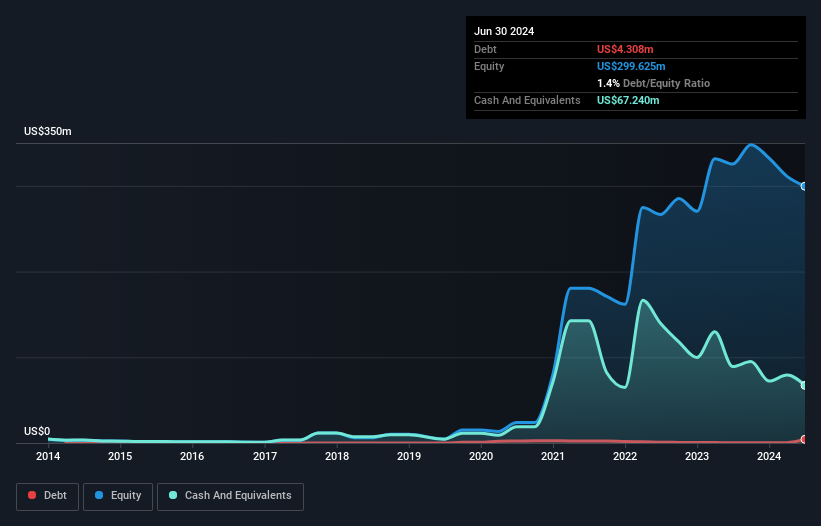Legendary fund manager Li Lu (who Charlie Munger backed) once said, 'The biggest investment risk is not the volatility of prices, but whether you will suffer a permanent loss of capital.' So it seems the smart money knows that debt - which is usually involved in bankruptcies - is a very important factor, when you assess how risky a company is. We note that Piedmont Lithium Inc. (ASX:PLL) does have debt on its balance sheet. But the more important question is: how much risk is that debt creating?
When Is Debt Dangerous?
Debt assists a business until the business has trouble paying it off, either with new capital or with free cash flow. In the worst case scenario, a company can go bankrupt if it cannot pay its creditors. While that is not too common, we often do see indebted companies permanently diluting shareholders because lenders force them to raise capital at a distressed price. By replacing dilution, though, debt can be an extremely good tool for businesses that need capital to invest in growth at high rates of return. The first step when considering a company's debt levels is to consider its cash and debt together.
View our latest analysis for Piedmont Lithium
How Much Debt Does Piedmont Lithium Carry?
As you can see below, at the end of June 2024, Piedmont Lithium had US$4.31m of debt, up from US$349.4k a year ago. Click the image for more detail. However, it does have US$67.2m in cash offsetting this, leading to net cash of US$62.9m.

How Strong Is Piedmont Lithium's Balance Sheet?
According to the last reported balance sheet, Piedmont Lithium had liabilities of US$36.0m due within 12 months, and liabilities of US$4.00m due beyond 12 months. Offsetting these obligations, it had cash of US$67.2m as well as receivables valued at US$13.3m due within 12 months. So it can boast US$40.5m more liquid assets than total liabilities.
This excess liquidity suggests that Piedmont Lithium is taking a careful approach to debt. Because it has plenty of assets, it is unlikely to have trouble with its lenders. Succinctly put, Piedmont Lithium boasts net cash, so it's fair to say it does not have a heavy debt load! The balance sheet is clearly the area to focus on when you are analysing debt. But it is future earnings, more than anything, that will determine Piedmont Lithium's ability to maintain a healthy balance sheet going forward. So if you want to see what the professionals think, you might find this free report on analyst profit forecasts to be interesting.
In the last year Piedmont Lithium managed to produce its first revenue as a listed company, but given the lack of profit, shareholders will no doubt be hoping to see some strong increases.
So How Risky Is Piedmont Lithium?
By their very nature companies that are losing money are more risky than those with a long history of profitability. And in the last year Piedmont Lithium had an earnings before interest and tax (EBIT) loss, truth be told. And over the same period it saw negative free cash outflow of US$44m and booked a US$39m accounting loss. However, it has net cash of US$62.9m, so it has a bit of time before it will need more capital. Even though its balance sheet seems sufficiently liquid, debt always makes us a little nervous if a company doesn't produce free cash flow regularly. The balance sheet is clearly the area to focus on when you are analysing debt. But ultimately, every company can contain risks that exist outside of the balance sheet. For example Piedmont Lithium has 2 warning signs (and 1 which is significant) we think you should know about.
When all is said and done, sometimes its easier to focus on companies that don't even need debt. Readers can access a list of growth stocks with zero net debt 100% free, right now.
New: Manage All Your Stock Portfolios in One Place
We've created the ultimate portfolio companion for stock investors, and it's free.
• Connect an unlimited number of Portfolios and see your total in one currency
• Be alerted to new Warning Signs or Risks via email or mobile
• Track the Fair Value of your stocks
Have feedback on this article? Concerned about the content? Get in touch with us directly. Alternatively, email editorial-team (at) simplywallst.com.
This article by Simply Wall St is general in nature. We provide commentary based on historical data and analyst forecasts only using an unbiased methodology and our articles are not intended to be financial advice. It does not constitute a recommendation to buy or sell any stock, and does not take account of your objectives, or your financial situation. We aim to bring you long-term focused analysis driven by fundamental data. Note that our analysis may not factor in the latest price-sensitive company announcements or qualitative material. Simply Wall St has no position in any stocks mentioned.
About ASX:PLL
Piedmont Lithium
A development stage company, engages in the exploration and development of resource projects in the United States.
Adequate balance sheet with low risk.
Similar Companies
Market Insights
Community Narratives



